|
|
Stewart's Corral |
page 15 |
photos for hoof trimming of "Cowgirl"
7 yr old Arab-QH-Standardbred mare
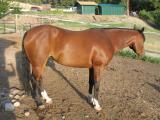

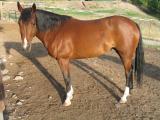

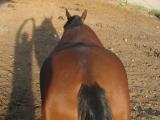 2008.Aug.23 |
Click on newest thumbnails to enlarge
(First time visitors, first see notes below from day one)
This page was created to show improvement by proper and balanced hoof trimming.
Unfortunately, by 2009, Cowgirl's story began to focus elsewhere...
|
2011.May.30 From the last pictures of Cowgirl's hooves, here's a couple to show our end result. Nice concavity, but still contracted heels in front, due to contracted tendons. She had this problem when I bought her in 2005, as she did not like her front legs brushed. That problem became worse over time. Could the wire cuts on both heel bulbs be the root cause? or was it her weak immune system and environmental illnesses? I rode far last autumn and even kept going during the 15-25 degree days of winter. But starting Mar.26 she returned to being intermittant lame, and then the lethargy and stumbling, uneven gain, and muscle shaking. Then the fever, tick season, and much stumbling, and now she's gone. Be sure to see our accomplishments and final goodbye with her foal picture here. | ||||||
|
|
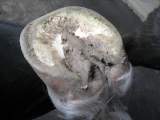 |
|
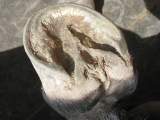 | |||
|
2010.May.14 I was able to ride all winter, even down below freezing, which was a first. But when the spring grass appeared, all the symptoms came back. Stumbling, dragging. This date, with chiropractic adjustment, we found neck, hip, and mid back out. 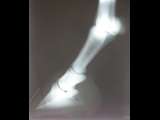 Well, the x-ray does not look bad. In fact it shows nothing wrong with bone and joint. | ||||||
|
2010.Jan.29 FL P1 joint is looking larger. She hops at a trot sometimes. Pastern is more vertical. Contracted tendons is not getting better, despite targeted nutritional feeding. Diagnosis: DSLD is looking less and less likely to avoid. Toe first landings are the problem, thus affecting the joint. Root problem has to be in avoiding landings on the heels. Are the contracted tendons the chicken or the egg? 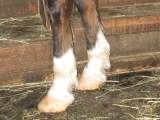 | ||||||
|
2009.May.18 Front hooves are showing a level of concavity that is a remarkable change for the better. She still seems to put more weight on her toe, so the heels grow faster and need to be watched. The weather has made it difficult to keep the frogs clean, so a bit of relapse there regarding ratty looking frogs. Now that the roads have hardened, I started putting her boots back on, and she said that feels better, and we have gone on a few longer rides, making new distance records for Cowgirl (8 miles plus elevation calculation = 13 miles), although not for me. She is still only going half the distance Shadow was capable of, but this is progress. Considering the amount of toxic environmental illness and tick bite related sicknesses, she has needed to heal, I'm not complaining too badly. We just finished a second MSAS homopathic treatment, see Illness page 23. This has made a remarkable difference, combined with VitaRoyal feeding for protein. As the spring grass came out, she also showed how sensitive she is to the sugars and carbohydrates (Insulin Resistant), and was sore for a couple weeks. I was also able to find some grass hay, and so stopped feeding the winter 10% alfalfa. Definitely a factor in her thyroid and low temperature/metabolism. | ||||||
|
2009.Mar.17 Almost fully sound. Certainly willing to trot and canter soundly. Still have issues with the frogs and central sulcius is deeper, and heels are still contracted. Not fully willing to stand on one leg, but is better. | ||||||
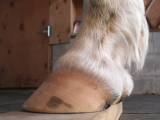   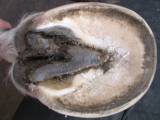 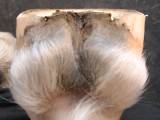 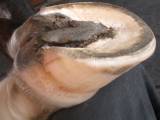 |
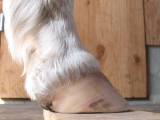   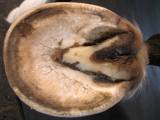 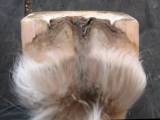 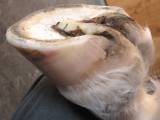 |
|
| |||
|
2009.Jan.17 I received advice from Hoofcare Unltd which shows markups of some key photos. After changing how I trim the bars, Cowgirl was eager to go and showing signs I finally got it right. | ||||||
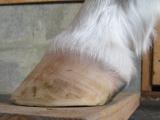 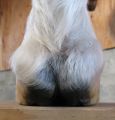 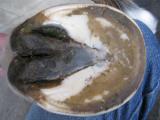 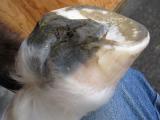 |
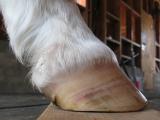 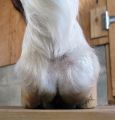 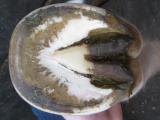 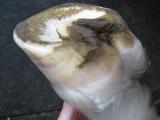 |
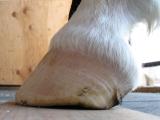 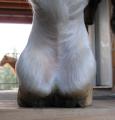 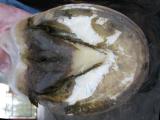 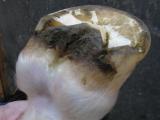 |
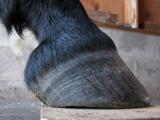 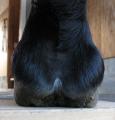 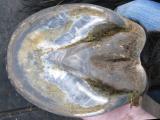 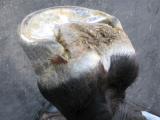 | |||
|
2008.Nov.10 Showing healthy frogs since I started treating them with oxine, to kill the thrush and other fungal possibilities. Heels are still contracted... | ||||||
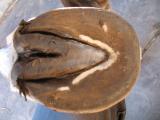 |
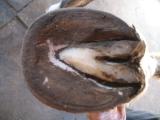 |
|
| |||
|
Photos between the first and current trimmings are on the archive page 2008.Sep.04 2008.Aug.27 2008.Aug.21-23 2008.Aug.20 2008.Aug.15 2008.Jul.25 2008.Jun.06 2007.Jun 2006.Jun.10 2006.Apr.26 2006.Apr.09 2006.Mar.17 2006.Mar.10 2006.Mar.01 2006.Feb.15 2006.Feb.01 2006.Jan.31 2006.Jan.24-26 2006.Jan.23 2006.Jan.03 2005.Nov.16 2005.Nov.06 2005.Nov.03 2005.Sep.17 | ||||||
|
2005.Sep.16 untrimmed status Has been barefoot all her life, and not had her feet picked up very much. Finally got her feet to stay up and hold still long enough to get some pictures. Clearly, the heels are Long. Both toe angle and hair-line angle suggest 10 degrees. Considering the amount of exercise she gets on her own, today cantering around like a youngster with energy to burn for perhaps half an hour, her feet should be getting sufficient wear on their own... if her pasture had enough rocks for abrasion. One thing that concerns me, is the flares on the sides of her hooves. The angle midway down from the coronet changes, suggesting separation (or weakness) of the laminae. (Or deficiency of biotin and/or sulphur (MSM)) | ||||||
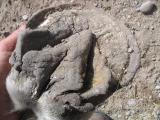 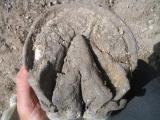 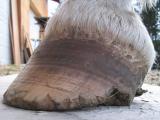 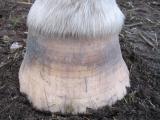 |
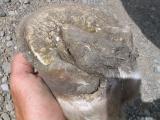 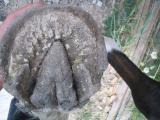 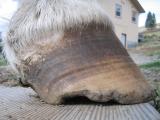 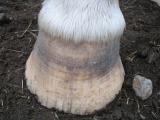 |
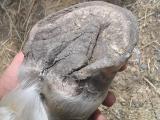
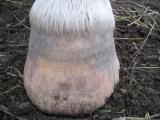 |
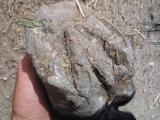 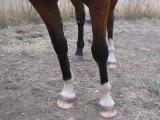
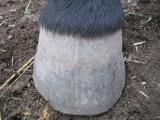
| |||
![[Home]](images/home.gif)
![[Willapa Valley photos]](images/19990309-10.06-t60.jpg)
![[Republic photos]](images/20021128-23.23-t60.jpg)
![[Horse and goat photos]](images/20040403_GlamourHeadCurious_t60.jpg)